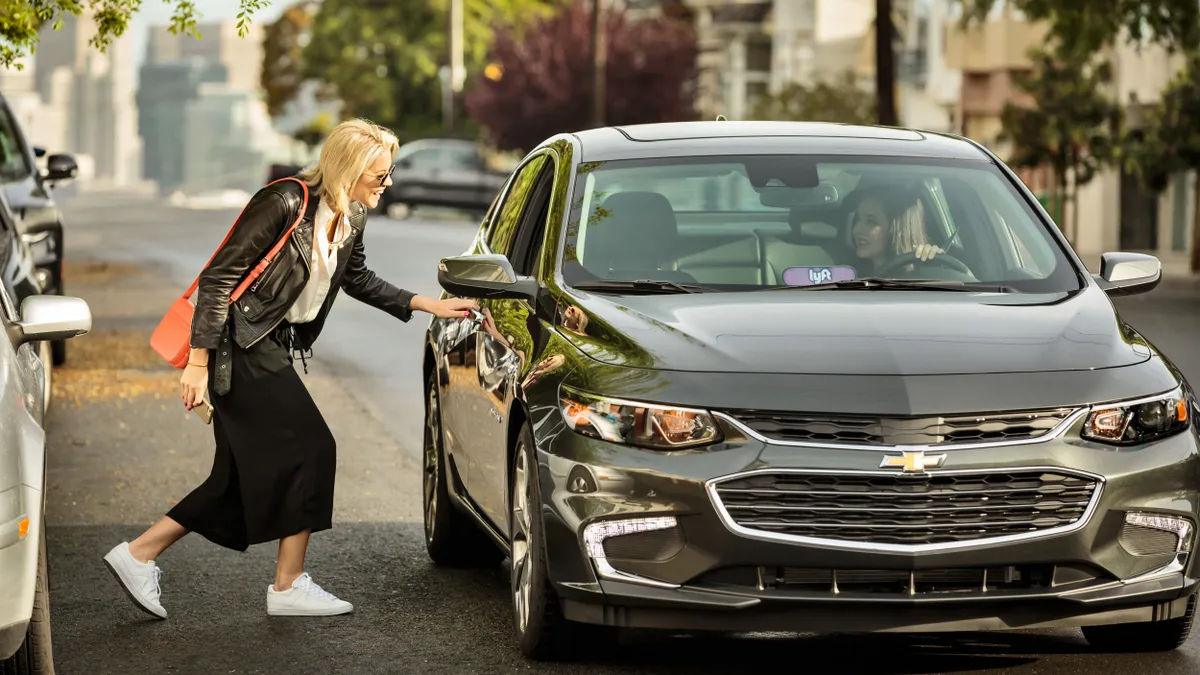Dive Brief:
- Lyft has begun using geofencing to limit customer pick-ups along a portion of busy Valencia Street in the Mission District of San Francisco, according to Mission Local.
- The ride-sharing company will move a certain amount of its pick-ups to a side street as a safety measure to reduce congestion and discourage double parking, which has especially had an impact on cyclists in that area.
- "Lyft believes that combining technology and infrastructure is necessary to creating safe, vibrant streets," a Lyft spokesperson said in an emailed statement. "We're encouraged by the City's recent installation of safe-hit posts along Valencia Street and are excited to collaborate on experiments, like this current pilot on Valencia, that can help support citywide Vision Zero and multi-modal goals."
Dive Insight:
Ride-share drivers pulling over suddenly or double parking — even in bike lanes — is a growing complaint in cities, especially those with narrow streets and a lot of traffic. The San Francisco Police Department reportedly said last spring Uber and Lyft drivers made up two-thirds of the traffic violations downtown.
Late Mayor Ed Lee worked with Uber and Lyft for about six months last year to devise the pilot to improve safety, reaching an agreement in November. But Lee's death from a heart attack in December, before the concept could be rolled out, left the details in limbo until now. He agreed to convert some curbside parking spaces into ride-share pick-up and drop-off zones in exchange for the companies providing the city with traffic data traffic planners could use to ease congestion. It's unclear how much of Lee's plan has been incorporated into Lyft's new program, and whether the company will still offer its data to the city.
The location for the program roll-out hadn't yet been determined when Lee died, but Valencia Street emerged as a possible site. The commercial corridor is heavily traveled by pedestrians and cyclists and has robust ride-share traffic, which leads to quite a bit of double parking. Double-parking in bike lanes has particularly plagued Valencia Street, and protective barriers were recently installed along portions of its bike lane.
Geofencing is one measure more cities and stakeholders are considering to better manage the increasingly crowded curb space. Bike-share providers and delivery carriers also report working with cities to come up with solutions for sharing curb space. San Francisco's small geofencing test program holds the strong possibility of becoming more widespread throughout the city and catching on in other cities struggling to manage curb space, decrease traffic violations and increase road safety.












